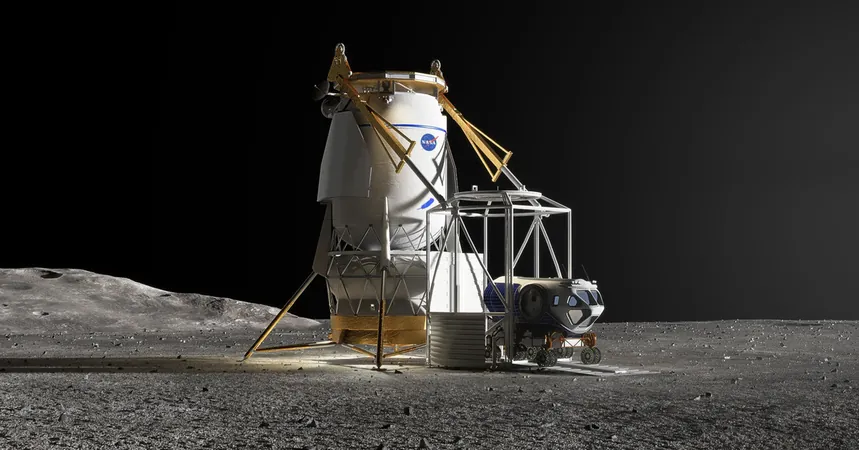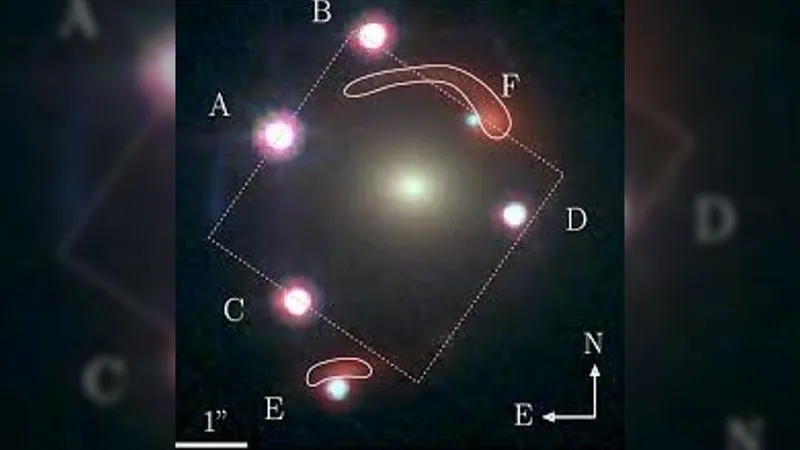
Discovering Cosmic Connections: Are Egg-Shaped Galaxies Aligned with Their Supermassive Black Holes?
2024-11-18
Author: Sophie
Introduction
Astronomers have made a groundbreaking discovery that suggests a surprising alignment between the shapes of egg-shaped galaxies and the supermassive black holes residing at their cores. This revelation opens new avenues of understanding in the field of astrophysics and the complex dynamics of galaxies.
The Role of Supermassive Black Holes
Supermassive black holes, while seeming like silent monoliths in the vast universe, play a critical role in shaping their galactic environments. They typically weigh millions to billions of times more than our Sun and are nestled in the center of galaxies, exerting a gravitational influence on nearby stars and cosmic matter.
Quasar Activity and Jets
When these black holes become active—often categorized as quasars due to the intense radiation emitted from the hot accretion disk of gas and dust spiraling into them—they can emit powerful jets of particles at nearly the speed of light. These jets can stretch out for millions of light years, creating dynamic interactions with the surrounding galaxy. Astronomers utilize advanced techniques such as very long baseline interferometry (VLBI) to observe these jets with unprecedented detail, even surpassing capabilities of the James Webb Space Telescope in some respects.
Research Findings
In a recent study published in *Nature Astronomy*, researchers examined the relationship between quasar jets and the shapes of their host galaxies. They found a surprising correlation: the direction of quasar jets often aligns with the shorter axis of elliptical galaxy shapes. This is quite striking, considering that the scales involved are immensely different—the black holes are diminutive compared to the sprawling structures of their galaxies that can span hundreds of thousands of light years.
Implications for Galaxy Evolution
This finding raises important questions about the formation and evolution of galaxies. Although spiral galaxies are well-known, many undergo interactions and mergers that result in elliptical formations. During these high-energy events, quasar activity can be triggered, hinting at a complex link between galaxy evolution and supermassive black hole activity.
Future Directions
Moreover, with the recent discoveries of massive quasars existing much earlier in the universe's history than previously believed, it's clear that astronomers need to refine their understanding of how galaxies and black holes interact and affect one another through cosmic time.
Conclusion
As we delve deeper into the mysteries of the cosmos, the intricate relationship between galaxy shape and black holes may challenge our existing models of galaxy formation and behavior. This revelation not only adds a new layer to our understanding of the universe but also underscores the need for further research and exploration. Buckle up, as astrophysicists are just beginning to unpack the colossal implications of these cosmic connections!









 Brasil (PT)
Brasil (PT)
 Canada (EN)
Canada (EN)
 Chile (ES)
Chile (ES)
 España (ES)
España (ES)
 France (FR)
France (FR)
 Hong Kong (EN)
Hong Kong (EN)
 Italia (IT)
Italia (IT)
 日本 (JA)
日本 (JA)
 Magyarország (HU)
Magyarország (HU)
 Norge (NO)
Norge (NO)
 Polska (PL)
Polska (PL)
 Schweiz (DE)
Schweiz (DE)
 Singapore (EN)
Singapore (EN)
 Sverige (SV)
Sverige (SV)
 Suomi (FI)
Suomi (FI)
 Türkiye (TR)
Türkiye (TR)